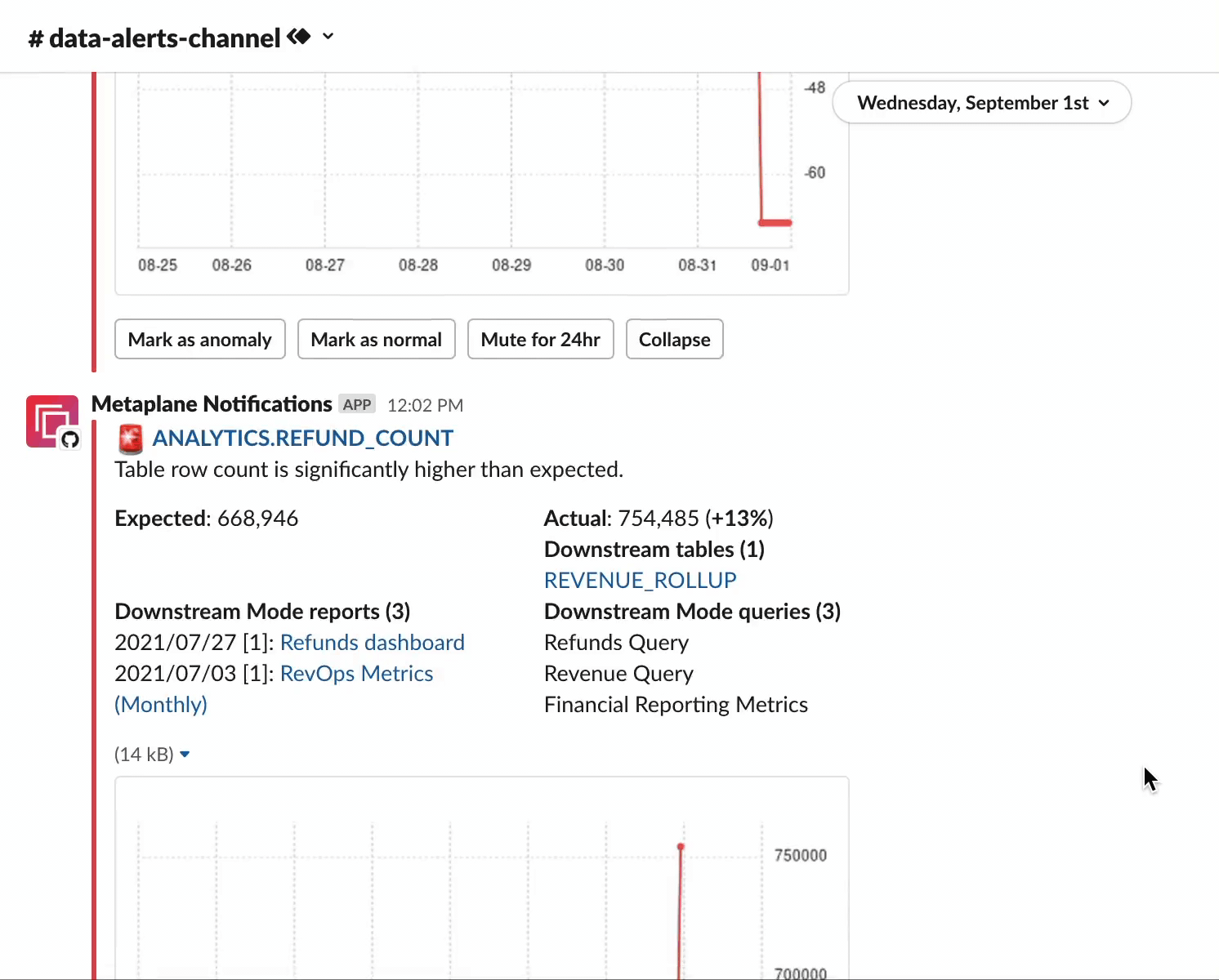Welcome to Metaplane
Trust in data takes seconds to lose and months to regain. Metaplane helps you be the first to know of data issues.
Why does data observability matter?
If you're reading these docs, you and your team have probably put in massive amounts of effort to get data into one place and help your organization use it.
Unfortunately, as you store and model increasing amounts of data for more and more use cases, your stakeholders can become the first people to learn about data issues:
- "Why does this number look off?"
- "Why is this table not updating?"
- "Why did this column disappear?"
Each time this happens, it's more than just a headache — people start losing trust in data.
The goal of a data observability tool is to help you be the first, not the last, to know about data issues. You can learn more about data observability in our blog:
- What is data observability?
- How to evaluate data observability tools
- Business benefits of data observability
What does Metaplane do?
Metaplane continuously monitors the data flowing through your data stack then alerts you when something may be going wrong. We do this by collecting metrics, metadata, lineage, and logs, training anomaly detection models on historical values, then sending you alerts for outliers with options to provide model feedback.

How do I get started?
You've come to the right place, fellow traveler! If you like to learning through practice, you can create an account and get started now. If you like acquiring knowledge first, here are three places to start:
- See how exactly you can add observability to your data stack in <10 minutes: Getting started.
- Integrate data warehouses like Snowflake, transformation tools like dbt Cloud, and business intelligence tools like Looker. You'll only need to select data warehouse to get started!
- Read the latest from our blog: Blog
Read more about where we recommend placing monitors here.
Additional resources
To learn more at a higher-level, check out these resources:
Updated 8 months ago


.png)
.png)